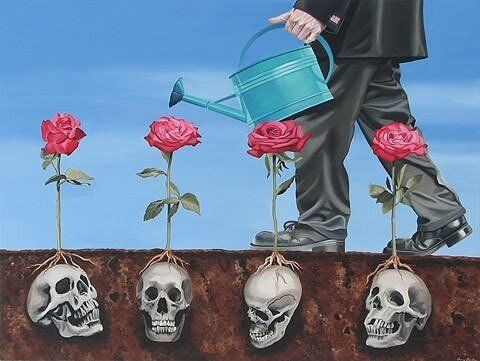
Image: Amy Guidry
"From my rotting body, flowers shall grow and I am in them and that is eternity"
- Edvard Munch
With the above quote, Munch has touched upon two concepts. One is The First Law of Thermodynamics which contains the 'law of conservation of energy' and asserts that energy cannot be created or destroyed - it can only change form. The other is that death and decay are natural processes, necessary for procreation.
In our current Western societies we are doing some unnatural things with our dead: we are treating them with chemicals in a misguided attempt to retard decomposition (for example, embalming) and we are performing vanishing corpse tricks by literally making them disappear and having little interaction with them, if any at all.
The environmental effects of this are well documented - here's a recent article - but what concerns me in this piece is the mental legacy of such death disassociation. Why are we so afraid of death? Why, if we see a decomposing corpse, do we 'de-compose' and enter a state of turbulence and instability? Is suppressing the natural need to confront our mortality via the everyday and the familiar instead translating into a desire for ever more bloody media, perhaps to elicit the same feelings of mortality salience via the deaths of strangers?
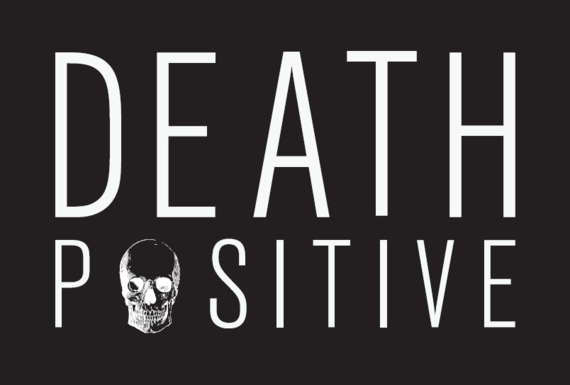
Image: Death Salon
The US organisation Death Salon promotes "Death Positivity" (even selling t-shirts like the one above, to raise funds for their events) and this may seem a facile or even offensive term to some; those who have recently lost a loved one, for example. However, founder of The Order of the Good Death, Caitlin Doughty, coined the term after being inspired by the 'sex positivity' movement which was created to encourage engagement with the topic, rather than trying to keep death behind closed doors. I also interpret it as positivity about one's own death (or at the very least neutrality!) and overcoming 'death denial'. This concept of 'death acceptance' and the more actively engaging 'death positivity' is nothing new.
In Buddhist practice, one of the most important meditation series' applied to promote mindfulness and Maranasati is that of the Cemetery Contemplations: meditating upon stages of death and decay from fresh death, through to a corpse which is "reduced to bones gone rotten and become dust." This practice even gave rise to the art of Kusozu: depictions of women in all stages of decomposition, created in Japan from the 13th to the 17th century (examples of which are currently at The Wellcome Collection's Forensics exhibition.)
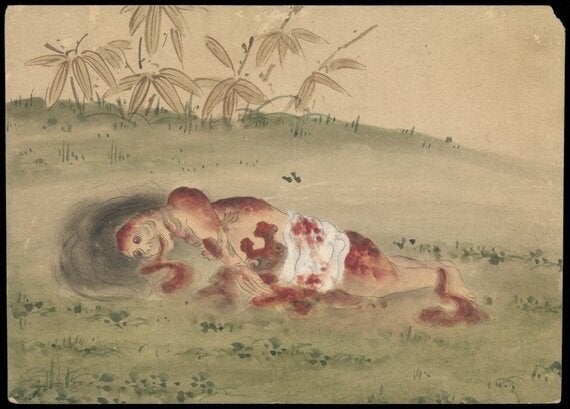
Image: Wellcome Library
More recently, research by the University of Kent and the Association for Psychological Science indicates that considering "their mortality in a more personal and authentic manner may make (people) think more about what they value in life."
I've worked with human remains in various guises for over 10 years and the idea of interacting with them, for example at medical museums, is currently particularly contentious. Previously, in the 18th Century, some anatomy museums were "venues for social interaction" and the museum that surgeon John Heaviside founded in 1793 became a fashionable salon with a "very agreeable and instructive assembly." (All quotes from "Indecent and Demoralising Representations". Fast forward a few years and many anatomical specimens and wax models were destroyed under the Obscene Publications Act 1857 - for being too titillating and obscene. Over 100 years later, a similar destruction of valuable pieces occurred in the wake of the retained organs scandals and the formation of the Human Tissue Authority in the UK: specimens were disposed of rather than cause the holding premises to be subject to scrutiny, and regulations were placed on who should be able to see them. This is the climate that still exists.
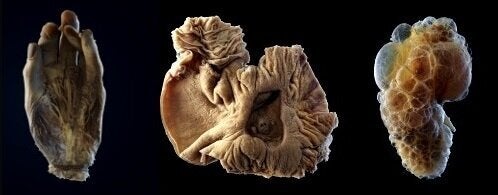
Images: Scott Grummett
As it stands, in my museum, a member of the general public cannot see a real human Forensic specimen from the collection. Let's say this is from a female victim of torture: a visual confrontation such as this, in its stark reality, may provoke an empathetic and perhaps even charitable response leading to positive actions. A member of the general public can however, watch a woman be tortured in various films and even carry it out themselves in some computer games, leading to a disassociation with pain and suffering.
We have things the wrong way round. Confronting death; contemplating it or being "Death Positive" is natural, not titillating or macabre. It isn't wrong for people to spend time with deceased loved ones or be curious about decomposition and medical specimens, and it isn't strange to consider your own death. It promotes awareness, respect and happiness, via a deeper appreciation of nature and of life.
I certainly don't consider it 'morbid' and if others do then I'm fine with that - after all, blondes do have more(bid) fun.
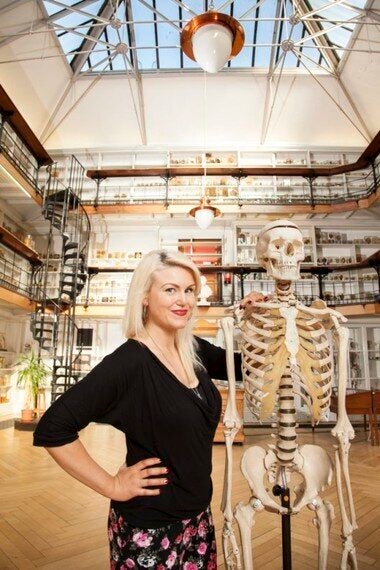
Image: Rob Grieg for Time Out London
